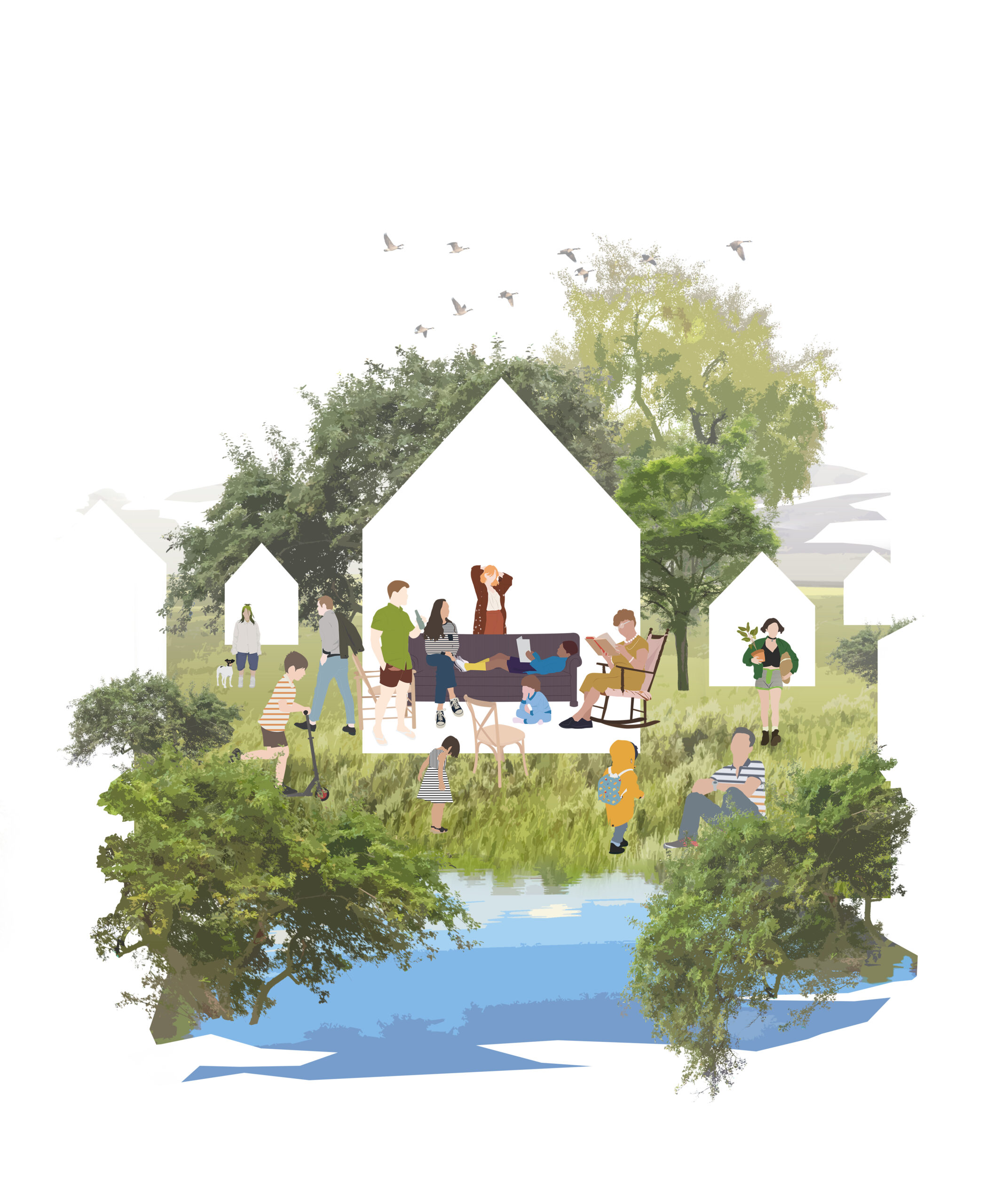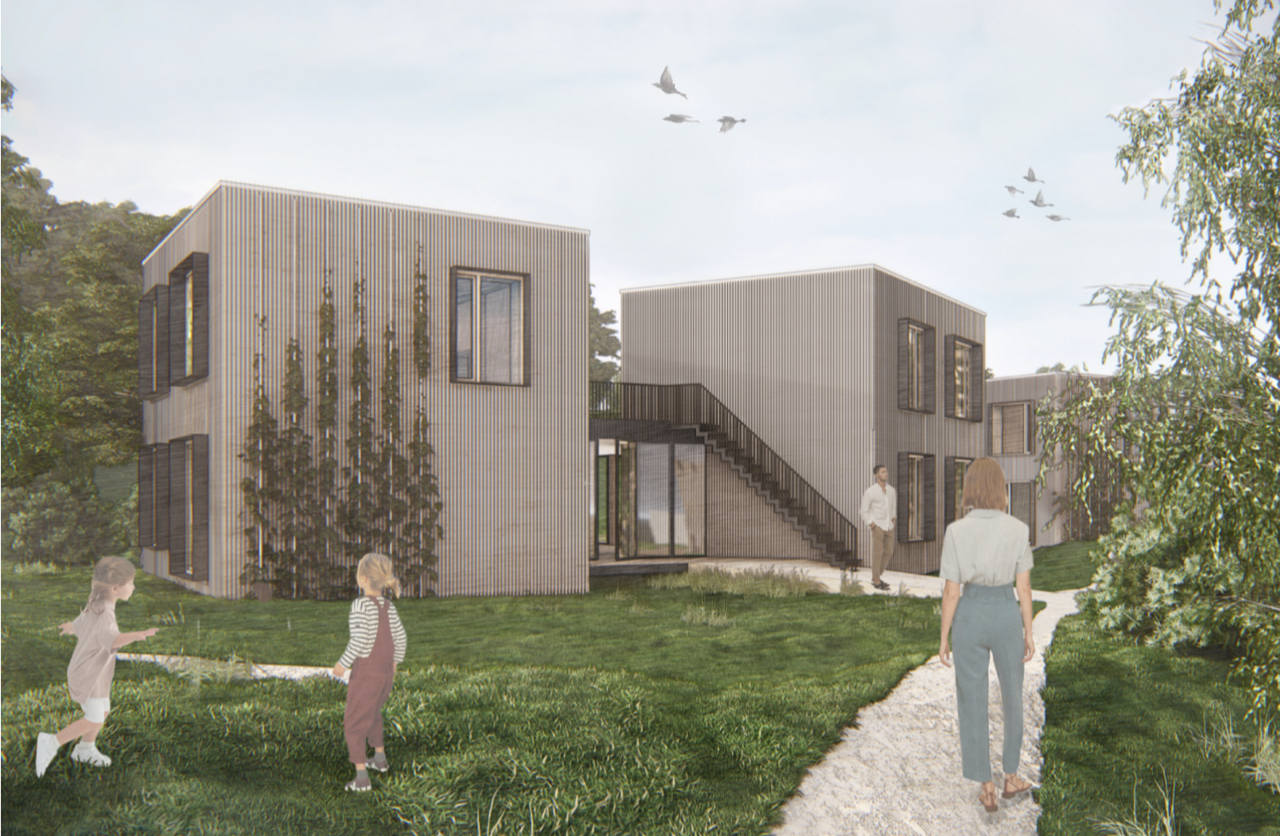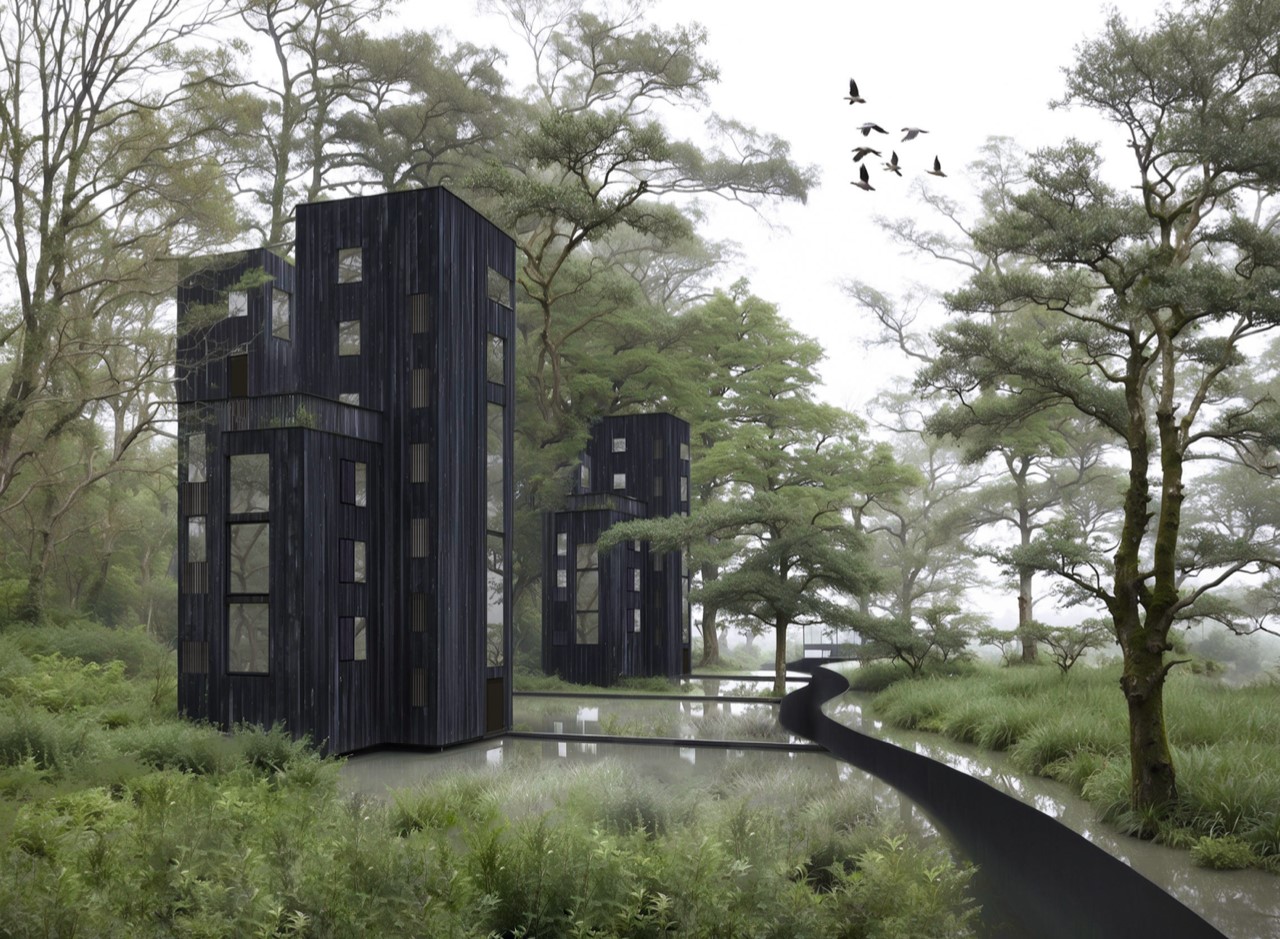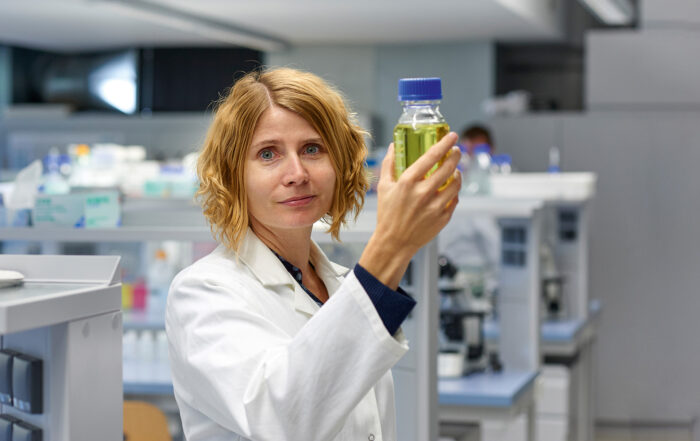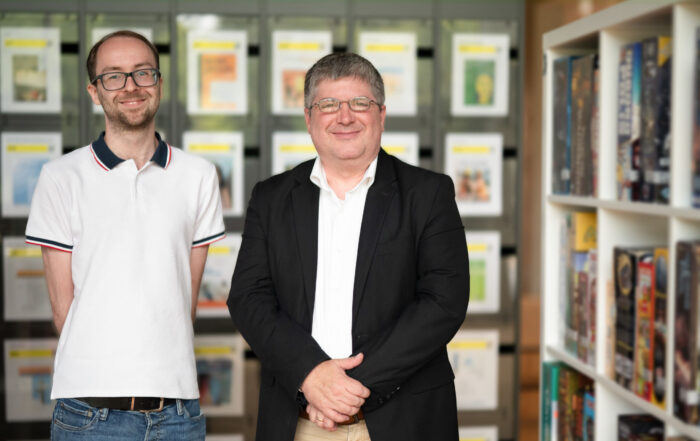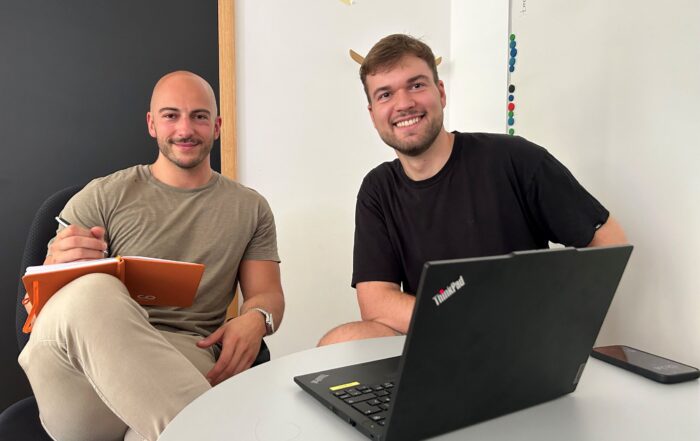17. June '24
(Press office)
Away from the standard single-family housing estate: “Kleiner Wohnen Redwitz” is an exemplary, innovative project for simple construction in an energy- and resource-saving, climate-friendly way.
The aim is natural, communal living on small floor plans: without fences, cost-effective and optimized living with communal facilities.
Housing ideas for Redwitz by architecture students from the Faculty of Design at Coburg University of Applied Sciences will be on display from Tuesday, June 18 to Sunday, June 23 at the Bürgerhaus in Redwitz, and there will also be an information event for interested parties and future residents. High energy and resource consumption, but also CO2 emissions, waste pollution and land sealing: the construction and housing sector is a challenge for people and the environment.
Although buildings are becoming better in terms of construction, increasing demands for comfort and growing living space are negating these achievements.
At the same time, construction, operating and real estate costs are rising sharply, making home ownership almost impossible, especially for families without a financial basis.
This is where “Kleiner Wohnen Redwitz” comes in as an exemplary, innovative project for simple construction.
In the inner-local settlement and housing pilot project for the creation of alternative, space-saving, resource-efficient and social forms of housing (building cooperative) in rural areas, environmental compatibility in construction is also a top priority.
The project of the municipality of Redwitz a.d.Rodach and Raab Baugesellschaft (Ebensfeld) will be accompanied and supported for two years by a research project of Prof. Dr. Rainer Hirth of the Coburg University of Applied Sciences and funded by the Bavarian State Ministry for the Environment and Consumer Protection. Natural wasteland becomes a climate and nature oasis A natural site of around 15,000 square meters in the village is located close to industry, residential areas, a church, cemetery, school, sports grounds and outdoor pool.
The municipality is planning a new residential area here.
Sustainable, space- and resource-saving, nature-friendly, affordable construction in harmony with the location and nature can counteract the negative consequences of today’s construction and contribute to climate protection.
The natural areas in the project area are not damaged as far as possible, but rather enrich the residential use.
The urban wasteland with revitalized water will become a climate and nature oasis.
The residents of the entire village benefit: resilience against overheating or flooding (sponge city).
The residential area remains car-free, sustainable mobility is promoted.
The natural environment is given special consideration during planning in close cooperation with zoologists, biologists and geoecologists.
Concreted basements and foundations are avoided, the buildings should barely touch the ground and the building materials are eco-friendly.
“Simple building” makes do with a small but effectively used living space with little but sufficient building technology.
The residents accept certain comfort adjustments in favor of the climate protection concept.
The socially acceptable, communal, cooperative construction concept and cost-effective implementation should make the resulting living space (with communal facilities) financially affordable, especially for low-income individuals or families. The dried-up pond will be restored The piece of nature to be planned in the middle of Redwitz with the dried-up pond is deliberately not to be like conventional single-family housing estates: no standard development with large and expensive single-family houses with ornamental gardens on individual private plots.
There will be no major road and surface sealing due to car-friendly planning and no conventional construction methods with a high CO2 footprint and large land consumption. Instead, the aim is to create natural, communal living without fences as well as simple construction (building class E) and thus cost-effective, optimized living on small floor plans.
Another goal for the project is an energy- and resource-saving, climate-friendly construction method with low land sealing through a central parking lot instead of access roads and parking areas in the residential area.
The planning takes account of the site, nature and wildlife, and the former pond will be restored.
As a climate oasis, the neighborhood and the surrounding area will be enhanced. Exhibition from 18 to 23 June Under these guidelines, students of architecture at the Faculty of Design at Coburg University of Applied Sciences developed neighborhood concepts for the project area in Redwitz in the winter semester 2023/24.
A selection of the bachelor and semester projects can be seen from Tuesday, June 18 to Sunday, June 23 in the Bürgerhaus in Redwitz (Am Markt 5, 96257 Redwitz).
The opening takes place on Tuesday at 6 pm, the exhibition is open daily from 5 pm to 8 pm.
The exhibition also serves as an information event for those interested in the residents’ cooperative “Kleiner Wohnen Redwitz”. Contact persons Residents, companies, investors or anyone else interested in the “Kleiner Wohnen Redwitz” residents’ cooperative project and concept should contact Gisela Raab (09573 338-15, g.raab@raab-bau.de), RAAB Baugesellschaft (Ebensfeld), Prof. Dr. Rainer Hirth (09561 317-352, rainer.hirth@hs-coburg.de), Coburg University of Applied Sciences, Jürgen Gäbelein (First Mayor, 09574 6224-0, rathaus@redwitz.de), Redwitz a.d.Rodach municipality.


